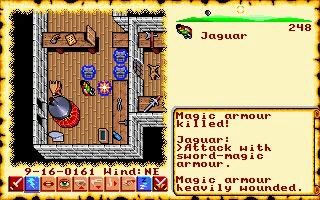Legendary Game Designers: Richard Garriott
Also known as Lord British - creator of the Ultima series
![]() By: Tasha
By: Tasha
Published: 2 October 2019, 1:29 pm
“Whenever I saw the sun, I reminded myself that I was looking at a star. One of over a hundred billion in our galaxy. A galaxy that was just one of billions of other galaxies in the observable universe. This helped me keep things in perspective.”
-Ernest Cline, Ready Player One
Space. The final frontier… just kidding. But space, as well as the book Ready Player One, are closely related to game designer Richard Garriott in more ways than one. Richard is the son of astronaut Owen Garriott, one of the first scientists-astronauts. Richard was fascinated with space and would eventually fly there himself on two separate space voyages (TMA-12 Soyuz and TMA-13 Soyuz) as a private citizen. Making him the second astronaut (first from the U.S.) to have a parent who had also been to space.
Aside from space, Richard would also develop an early interest in computer programming starting his freshman year of high school. His interest in programming even led him to get his school to let him teach himself programming using their Teletype. During his high school years, it is estimated that he made about 28 computer fantasy games, all using the Teletype. Richard was a dungeon master and a massive fan of D&D, so it should not surprise that he wanted to bring his passion for fantasy worlds into computer games.
In 1979, at the end of high school, Richard convinced his father to purchase an Apple II, specifically the just-released Plus model. This was an incredibly much better development environment compared to the teletype: he could program directly using the keyboard and see the results on screen and save the program on cassette. Plus, the computer had a color display and bitmap graphics. It opened a world of possibilities.
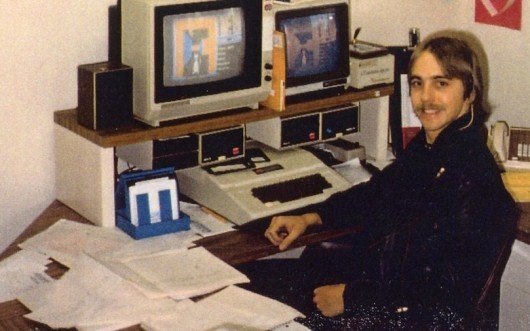
One day he saw a game written by Silas Warner of Muse Software called Escape. This Apple II game was rendering a maze in 3D from a first-person view. This gave him the inspiration to bring this kind of 3D view into one of the D&D games he wrote on the teletype. Thanks to the graphics capabilities of the Apple II, this was possible. The game, completed in the summer of 1980, was renamed Akalabeth, and it was the most complex and the best game Richard had written so far. The use of the first-person perspective was not totally new, even in 1980, but it was the first time it was used in a computer role-playing game.
Akalabeth
Unlike other contemporary RPGs such as Dunjonquest: Temple of Apshai, Akalabeth was more action-oriented and extremely playable, and thanks to the first-person perspective, it was really revolutionary. It also had another unique feature: randomly generated maps, which means infinite replayability, like Diablo. There was no save system, but thanks to the magic number system, you could go back precisely to the dungeon you were exploring. Dungeon crawling at its best.
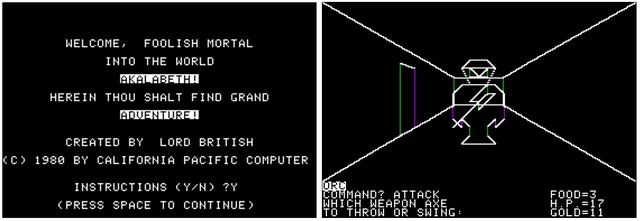
In the summer of 1980, Richard was working at the ComputerLand store in Houston. His boss noticed the game and convinced him that it was good enough to sell. With that encouragement, Richard spent about $200 of his own money to have a game manual and a cover (drawn by his mother, interestingly) to package a few copies in plastic bags for sale. While initially, the game only sold a few meager copies, it somehow wound up in the hands of someone from California Pacific. After showing it to others in the company, they decided to offer him a deal to publish the game. Making $5 per item, Richard wound up making $150,000 from his small $200 investment.
Ultima I
Following Akalabeth’s success, Richard had the means to create the first in the Ultima series, which was released in 1981. The game was revolutionary in the RPG genre and was the first open-world computer game of its kind. It was actually based on a campaign that Garriott invented for his D&D adventures.
Unlike Akalabeth, Ultima was not an action RPG; it was not meant to be replayable. Not just a vast world to explore, towns to visit, and dungeons to clean, but also a storyline and the main quest to complete.
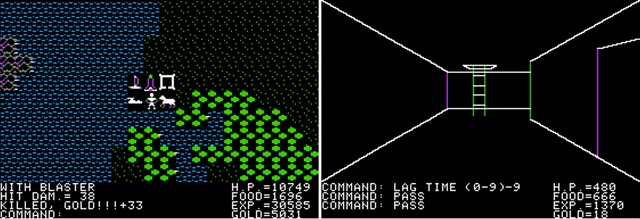
Ultima wound up being a massive success for Richard, and he would go on to make a multitude of other games expanding the series all the way up to 1999. The series sought to make tabletop gaming a little simpler and accessible to different types of players.
Ultima II
To create Ultima II, Richard had to learn a new, more efficient way of programming. The Applesoft BASIC was not powerful or fast enough to create the next chapter of his series, so in 1981 he decided to learn the assembly language. He also decided to drop University and work full-time on his new game. The same year he canceled his deal with his first publisher, California Pacific, which apparently had financial troubles and was not paying Garriott for the sales of Ultima. Richard signed a contract with On-Line Systems, the company founded by Ken and Roberta Williams.
The new game was really ambitious, and Richard had to use a new programming language, so it took a while to complete. Ultima II: The Revenge of the Enchantress would finally be published at the end of 1982 (when On-Line Systems changed its name to Sierra On-Line). Sierra agreed to release the game in the fashion that Richard wanted, with a cloth map and deluxe packaging.
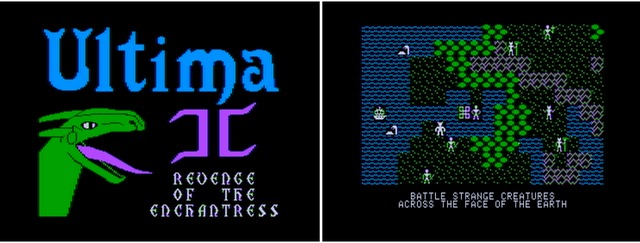
Ultima II is centered around an enchantress seeking to have her revenge on you for defeating the evil wizard in the first Ultima game. To overcome the enchantress, you must time travel to collect the tools to take her down. Ultima II plays very similarly to the first one, though it features a much larger scale with more places to explore.
Just like the first one, Ultima II did very well upon release, selling 50,000 copies in the first year. The success allowed Richard to move on to found his own company, Origin Systems, with his brother, Robert, and game designer Chuck Bueche.
The third game in the Ultima series would be published by Origin Systems in 1983.
Ultima III and Origin Systems
Ultima III would be the final game in Richard’s Age of Darkness series. Taking inspiration from another successful RPG series (Wizardry), Garriott added several new features to Ultima 3. There was no more a single adventurer but a full party to manage. There were also many different classes and races to choose from. Finally, a new combat mechanic and a magic system with lots of spells.
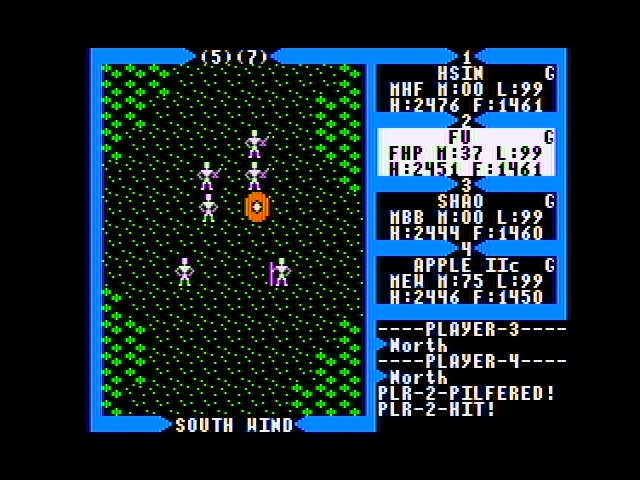
For the first time, the game was also featuring a soundtrack, composed by Ken Arnold. The music was especially appreciated by Commodore 64 owners. The game, in fact, was released for the Apple II but also ported a few months later to Commodore 64 and Atari 8-bit. Ultima III: Exodus was a successful release, selling more than 120,000 copies and making Origin Systems a very profitable company.
Ultima IV
After Ultima III, Richard started working immediately on the next game. Ultima IV: Quest of the Avatar would be the first in the Age of Enlightenment trilogy and would also feature a massive change in the series’ game formula. Though the original three featured a hack and slash type of gameplay, this new installment would lean more toward an actual role-playing. This time around, you are not necessarily going after an evil baddie; you are on more of an introspective quest. You are tasked with demonstrating the eight virtues to prove yourself as a spiritual leader. Garriot even read Dante’s Inferno to get the inspiration to design this journey of the players. Apart from this, you will find all the classical RPG elements: towns, dungeons, castles, monsters, NPCs, items, and equipment. You also have to manage food and the spells reagents.
Ultima IV also makes character stats more interesting by making you answer a series of ethical questions to determine your character’s personality.
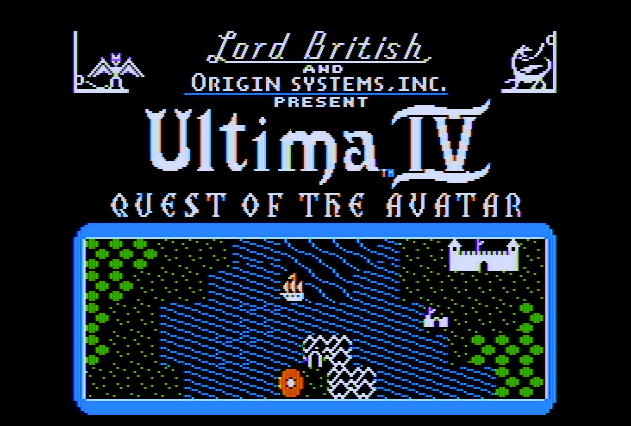
Ultima IV was a huge game: the world was 16 times the size of the Ultima III world. The development took two years: it was released at the end of 1985 for the Apple II and Commodore 64. It was later ported to many other platforms. The game was wildly successful and sold more than 400,000 copies, nearly four times as many as Ultima III.
Soon after Ultima IV, Richard’s company released a game called Autoduel. Based on the Steve Jackson Games series Car Wars, Autoduel takes place in a post-apocalyptic future where cars are your everything. They protect and transport you along the dangerous highways leading from place to place.
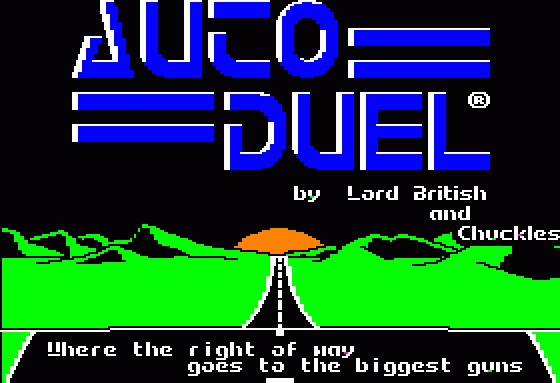
What is interesting about Autoduel is that it was one of the first open-ended games. The players could decide what to do and what goals they wanted to achieve. It's a sort of Grand Theft Auto.
Ultima V and VI
Ultima IV was the last game designed, programmed, and written entirely by Richard Garriott. He had to collaborate with a team to create Ultima V: Warriors of Destiny, released in 1988. At every new release, there were new improvements. Even if, at first sight, the graphics look similar to the other games, Ultima V added several new features, such as the interaction with the objects. There was also a more complex storyline.
But in the case of Ultima VI: The False Prophet, the series had a complete change. It was the first Ultima that was not created for the Apple II and the first for which Richard didn't do any programming, only game design and supervision. The other producer of Ultima VI was a name that would become one of the most famous in the video games industry: Warren Spector. But we'll talk about him another time.
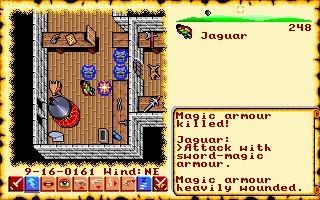
Ultima VI was also the first game of the series without the first-person view in the dungeons. Now all the game world, including towns and dungeons, was seen from an isometric top-down view. Really a major improvement. The game was released for PC, which replaced the Apple II as the main target for Origin Systems, in 1990.
Ultima VII
The last "classic" Ultima was Ultima VII: The Black Gate, released in 1992, a massive production for Origin Systems, with a cost of almost one mln dollars. Richard had a team of programmers, graphics artists, writers, and testers. The game engine was totally different and much more powerful, with a world shown in full screen, an isometric perspective that allowed characters to climb stairs and reach different heights, a completely mouse-driven interface, dialogue trees, and much more.
Ultima VII would need a dedicated article to be described, so better to stop here. Just know that Richard Garriot himself said that Ultima VII "was the most masterfully executed of the Ultima series".
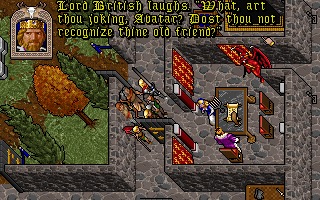
Ultima VII sold well but not as good as expected. Origin was not in financial trouble (also considering the success of Wing Commander), but to continue developing Hollywood-style games, a huge amount of cash was required. The same year Ultima VII was released, on September 1992, Garriott sold Origin Systems to a competitor, Electronic Arts, for $35 million. Richard Garriott became EA vice president.
Ultima Online
Richard didn't have much part in the development of Ultima VIII: Pagan, released in 1994. The game had to be cut to meet the deadline imposed by EA, and in the end, it was not a success. In 1997 Richard would find his way back to his Ultima series, this time turning it into a Massively Multiplayer Online Role-Playing Game. The game was called Ultima Online. Richard is actually credited with coining the term "Massively Multiplayer Online Role-Playing Game," thus changing the name from Graphical MUDs (Multi-User Dungeon/Dimension/Doman, depending on your preference). He would also make history during an online beta test of Ultima Online. His character, Lord British, was accidentally killed by another player, which was supposed to be unable to happen. Funnily enough, since the server had crashed and Richard forgot to re-enable his invulnerability, his character became killable and was smitten by “fire field.” Immediately following this accidental assassination, Lord Blackthorn (Starr Long) summoned demons that took out random players, which did not go over well. This event became one of the most memorable in the history of MMORPGs.
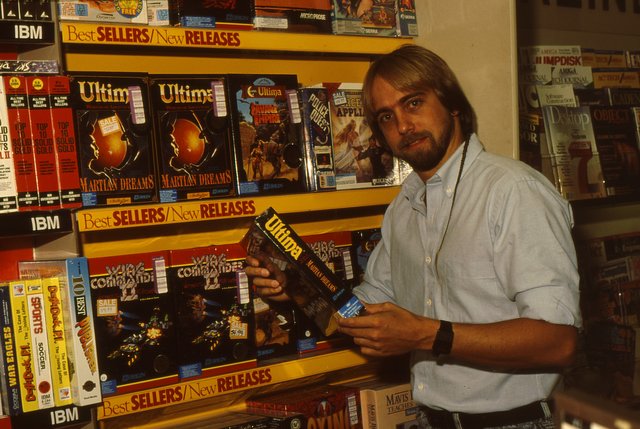
At NCSoft
Ultima Online was a success. It was the first MMORPG to reach 100,000 active subscribers. It continued to be popular for several other years, reaching 250,000 subscribers in 2003, but after that, the decline started. Anyway, Richard Garriot resigned from EA in 2000 and went to work for NCSoft in 2001. While there, he would not only make City of Heroes (2004) and City of Villains (2005), but he eventually became the CEO of NCSoft Austin. City of Heroes and City of Villains were two MMORPG games that I loved while I was in college. I remember my boyfriend at the time; his roommate had the only computer in the dorms that could run them. I used to beg him to let me play them on his computer. Such good times.
In these two games, you get to customize your own hero or villain and play online with other people. You could go on quests, join guilds, and have all-around fun.
Richard’s next project would be Tabula Rasa, yet another MMORPG. Tabula Rasa takes place in the distant future and features a mix of RPGs and shooter games. The titular Tabula Rasa is a group of Earth defenders trying to keep us safe from the alien scourge. The game features some real-time action sequences during combat but is not a genuine shooter. This game was seven years in development but had a disappointing release in 2007. It would completely shut down its servers just two years later.

After the failure of Tabula Rasa to garner the expected fan base, Richard allegedly wrote a resignation letter, telling players that he was leaving NCSoft. Richard contended that this letter was fake and was used as a means of ousting him from the company. Richard eventually filed a lawsuit and won against NCSoft regarding this and other employment issues.
In 2009 Richard started another company called Portalarium and began work on his next project Shroud of the Avatar: Forsaken Virtues. The game spent many years in production, even hosting a Kickstarter in 2013. In 2014 players were allowed early access to the game via Steam, but the game would not officially be released until 2018. SotA features the ability to craft and have housing, as well as the use of an ‘active virtue’ system. Though the game can be played online, it can also be played entirely offline, depending on which you prefer. Harkening back to Ultima IV, your character is tasked with not just combat but making certain ethical decisions that ultimately affect how the story unfolds. The game ditches the class system but keeps the open-world exploration. SotA has been met with mixed reviews, but improvements have come about since the initial release.
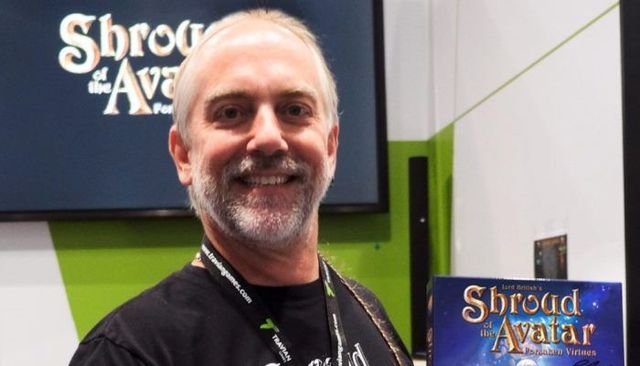
Now, I’m sure you’re wondering what the book Ready Player One has to do with Richard Garriott. For those who may not know, the personality of the eccentric virtual reality world creator, James Halliday, was based on both Humphrey Bogart and Richard Garriott. If you are not familiar with Ready Player One, I recommend it.
Aside from space exploration and game design, Richard has done many more things with his time and money: from being an accomplished magician, even making the cover of the magazine of the Society of American Magicians. He not only helped start the Challenger Center for Space Science Education and performed the first zero-gravity wedding, but he also owns a lunar lander and a lunar rover. He’s even acted as a cornerman for fighter Jesus Chavez. He has garnered multiple awards and accolades during his expansive career. Richard Garriott has led one hell of an exciting life, and he has not only gifted the world with the Ultima series, but he has helped shape RPGs and MMORPGs as we know them. Thank you, Lord British!

